-
EXECUTIVE SUMMARY
-
Market Overview
-
Key Findings
-
Market Segmentation
-
Competitive Landscape
-
Challenges and Opportunities
-
Future Outlook
-
MARKET INTRODUCTION
-
Definition
-
Scope of the study
-
Research Objective
-
Assumption
-
Limitations
-
RESEARCH METHODOLOGY
-
Overview
-
Data Mining
-
Secondary Research
-
Primary Research
-
Primary Interviews and Information Gathering Process
-
Breakdown of Primary Respondents
-
Forecasting Model
-
Market Size Estimation
-
Bottom-Up Approach
-
Top-Down Approach
-
Data Triangulation
-
Validation
-
MARKET DYNAMICS
-
Overview
-
Drivers
-
Restraints
-
Opportunities
-
MARKET FACTOR ANALYSIS
-
Value chain Analysis
-
Porter's Five Forces Analysis
-
Bargaining Power of Suppliers
-
Bargaining Power of Buyers
-
Threat of New Entrants
-
Threat of Substitutes
-
Intensity of Rivalry
-
COVID-19 Impact Analysis
-
Market Impact Analysis
-
Regional Impact
-
Opportunity and Threat Analysis
-
Antimicrobial Packaging Market, BY Application (USD Billion)
-
Food Packaging
-
Pharmaceutical Packaging
-
Medical Device Packaging
-
Consumer Goods Packaging
-
Antimicrobial Packaging Market, BY Type (USD Billion)
-
Active Packaging
-
Intelligent Packaging
-
Traditional Packaging
-
Antimicrobial Packaging Market, BY Material (USD Billion)
-
Plastic
-
Paper Paperboard
-
Metal
-
Glass
-
Antimicrobial Packaging Market, BY End Use (USD Billion)
-
Food Industry
-
Healthcare Industry
-
Cosmetics Industry
-
Antimicrobial Packaging Market, BY Regional (USD Billion)
-
North America
-
US
-
Canada
-
Europe
-
Germany
-
UK
-
France
-
Russia
-
Italy
-
Spain
-
Rest of Europe
-
APAC
-
China
-
India
-
Japan
-
South Korea
-
Malaysia
-
Thailand
-
Indonesia
-
Rest of APAC
-
South America
-
Brazil
-
Mexico
-
Argentina
-
Rest of South America
-
MEA
-
GCC Countries
-
South Africa
-
Rest of MEA
-
Competitive Landscape
-
Overview
-
Competitive Analysis
-
Market share Analysis
-
Major Growth Strategy in the Antimicrobial Packaging Market
-
Competitive Benchmarking
-
Leading Players in Terms of Number of Developments in the Antimicrobial Packaging Market
-
Key developments and growth strategies
-
New Product Launch/Service Deployment
-
Merger Acquisitions
-
Joint Ventures
-
Major Players Financial Matrix
-
Sales and Operating Income
-
Major Players RD Expenditure. 2023
-
Company Profiles
-
Amcor
-
Financial Overview
-
Products Offered
-
Key Developments
-
SWOT Analysis
-
Key Strategies
-
DuPont
-
Financial Overview
-
Products Offered
-
Key Developments
-
SWOT Analysis
-
Key Strategies
-
Clariant
-
Financial Overview
-
Products Offered
-
Key Developments
-
SWOT Analysis
-
Key Strategies
-
Mitsubishi Chemical
-
Financial Overview
-
Products Offered
-
Key Developments
-
SWOT Analysis
-
Key Strategies
-
Avery Dennison
-
Financial Overview
-
Products Offered
-
Key Developments
-
SWOT Analysis
-
Key Strategies
-
Rexam
-
Financial Overview
-
Products Offered
-
Key Developments
-
SWOT Analysis
-
Key Strategies
-
Berry Global
-
Financial Overview
-
Products Offered
-
Key Developments
-
SWOT Analysis
-
Key Strategies
-
Sealed Air
-
Financial Overview
-
Products Offered
-
Key Developments
-
SWOT Analysis
-
Key Strategies
-
Kraton
-
Financial Overview
-
Products Offered
-
Key Developments
-
SWOT Analysis
-
Key Strategies
-
Tetra Pak
-
Financial Overview
-
Products Offered
-
Key Developments
-
SWOT Analysis
-
Key Strategies
-
Reynolds Consumer Products
-
Financial Overview
-
Products Offered
-
Key Developments
-
SWOT Analysis
-
Key Strategies
-
Sappi
-
Financial Overview
-
Products Offered
-
Key Developments
-
SWOT Analysis
-
Key Strategies
-
BASF
-
Financial Overview
-
Products Offered
-
Key Developments
-
SWOT Analysis
-
Key Strategies
-
West Pharmaceutical Services
-
Financial Overview
-
Products Offered
-
Key Developments
-
SWOT Analysis
-
Key Strategies
-
Mondi
-
Financial Overview
-
Products Offered
-
Key Developments
-
SWOT Analysis
-
Key Strategies
-
Appendix
-
References
-
Related Reports
-
LIST Of tables
-
LIST OF ASSUMPTIONS
-
North America Antimicrobial Packaging Market SIZE ESTIMATES & FORECAST, BY APPLICATION, 2019-2035 (USD Billions)
-
North America Antimicrobial Packaging Market SIZE ESTIMATES & FORECAST, BY TYPE, 2019-2035 (USD Billions)
-
North America Antimicrobial Packaging Market SIZE ESTIMATES & FORECAST, BY MATERIAL, 2019-2035 (USD Billions)
-
North America Antimicrobial Packaging Market SIZE ESTIMATES & FORECAST, BY END USE, 2019-2035 (USD Billions)
-
North America Antimicrobial Packaging Market SIZE ESTIMATES & FORECAST, BY REGIONAL, 2019-2035 (USD Billions)
-
US Antimicrobial Packaging Market SIZE ESTIMATES & FORECAST, BY APPLICATION, 2019-2035 (USD Billions)
-
US Antimicrobial Packaging Market SIZE ESTIMATES & FORECAST, BY TYPE, 2019-2035 (USD Billions)
-
US Antimicrobial Packaging Market SIZE ESTIMATES & FORECAST, BY MATERIAL, 2019-2035 (USD Billions)
-
US Antimicrobial Packaging Market SIZE ESTIMATES & FORECAST, BY END USE, 2019-2035 (USD Billions)
-
US Antimicrobial Packaging Market SIZE ESTIMATES & FORECAST, BY REGIONAL, 2019-2035 (USD Billions)
-
Canada Antimicrobial Packaging Market SIZE ESTIMATES & FORECAST, BY APPLICATION, 2019-2035 (USD Billions)
-
Canada Antimicrobial Packaging Market SIZE ESTIMATES & FORECAST, BY TYPE, 2019-2035 (USD Billions)
-
Canada Antimicrobial Packaging Market SIZE ESTIMATES & FORECAST, BY MATERIAL, 2019-2035 (USD Billions)
-
Canada Antimicrobial Packaging Market SIZE ESTIMATES & FORECAST, BY END USE, 2019-2035 (USD Billions)
-
Canada Antimicrobial Packaging Market SIZE ESTIMATES & FORECAST, BY REGIONAL, 2019-2035 (USD Billions)
-
Europe Antimicrobial Packaging Market SIZE ESTIMATES & FORECAST, BY APPLICATION, 2019-2035 (USD Billions)
-
Europe Antimicrobial Packaging Market SIZE ESTIMATES & FORECAST, BY TYPE, 2019-2035 (USD Billions)
-
Europe Antimicrobial Packaging Market SIZE ESTIMATES & FORECAST, BY MATERIAL, 2019-2035 (USD Billions)
-
Europe Antimicrobial Packaging Market SIZE ESTIMATES & FORECAST, BY END USE, 2019-2035 (USD Billions)
-
Europe Antimicrobial Packaging Market SIZE ESTIMATES & FORECAST, BY REGIONAL, 2019-2035 (USD Billions)
-
Germany Antimicrobial Packaging Market SIZE ESTIMATES & FORECAST, BY APPLICATION, 2019-2035 (USD Billions)
-
Germany Antimicrobial Packaging Market SIZE ESTIMATES & FORECAST, BY TYPE, 2019-2035 (USD Billions)
-
Germany Antimicrobial Packaging Market SIZE ESTIMATES & FORECAST, BY MATERIAL, 2019-2035 (USD Billions)
-
Germany Antimicrobial Packaging Market SIZE ESTIMATES & FORECAST, BY END USE, 2019-2035 (USD Billions)
-
Germany Antimicrobial Packaging Market SIZE ESTIMATES & FORECAST, BY REGIONAL, 2019-2035 (USD Billions)
-
UK Antimicrobial Packaging Market SIZE ESTIMATES & FORECAST, BY APPLICATION, 2019-2035 (USD Billions)
-
UK Antimicrobial Packaging Market SIZE ESTIMATES & FORECAST, BY TYPE, 2019-2035 (USD Billions)
-
UK Antimicrobial Packaging Market SIZE ESTIMATES & FORECAST, BY MATERIAL, 2019-2035 (USD Billions)
-
UK Antimicrobial Packaging Market SIZE ESTIMATES & FORECAST, BY END USE, 2019-2035 (USD Billions)
-
UK Antimicrobial Packaging Market SIZE ESTIMATES & FORECAST, BY REGIONAL, 2019-2035 (USD Billions)
-
France Antimicrobial Packaging Market SIZE ESTIMATES & FORECAST, BY APPLICATION, 2019-2035 (USD Billions)
-
France Antimicrobial Packaging Market SIZE ESTIMATES & FORECAST, BY TYPE, 2019-2035 (USD Billions)
-
France Antimicrobial Packaging Market SIZE ESTIMATES & FORECAST, BY MATERIAL, 2019-2035 (USD Billions)
-
France Antimicrobial Packaging Market SIZE ESTIMATES & FORECAST, BY END USE, 2019-2035 (USD Billions)
-
France Antimicrobial Packaging Market SIZE ESTIMATES & FORECAST, BY REGIONAL, 2019-2035 (USD Billions)
-
Russia Antimicrobial Packaging Market SIZE ESTIMATES & FORECAST, BY APPLICATION, 2019-2035 (USD Billions)
-
Russia Antimicrobial Packaging Market SIZE ESTIMATES & FORECAST, BY TYPE, 2019-2035 (USD Billions)
-
Russia Antimicrobial Packaging Market SIZE ESTIMATES & FORECAST, BY MATERIAL, 2019-2035 (USD Billions)
-
Russia Antimicrobial Packaging Market SIZE ESTIMATES & FORECAST, BY END USE, 2019-2035 (USD Billions)
-
Russia Antimicrobial Packaging Market SIZE ESTIMATES & FORECAST, BY REGIONAL, 2019-2035 (USD Billions)
-
Italy Antimicrobial Packaging Market SIZE ESTIMATES & FORECAST, BY APPLICATION, 2019-2035 (USD Billions)
-
Italy Antimicrobial Packaging Market SIZE ESTIMATES & FORECAST, BY TYPE, 2019-2035 (USD Billions)
-
Italy Antimicrobial Packaging Market SIZE ESTIMATES & FORECAST, BY MATERIAL, 2019-2035 (USD Billions)
-
Italy Antimicrobial Packaging Market SIZE ESTIMATES & FORECAST, BY END USE, 2019-2035 (USD Billions)
-
Italy Antimicrobial Packaging Market SIZE ESTIMATES & FORECAST, BY REGIONAL, 2019-2035 (USD Billions)
-
Spain Antimicrobial Packaging Market SIZE ESTIMATES & FORECAST, BY APPLICATION, 2019-2035 (USD Billions)
-
Spain Antimicrobial Packaging Market SIZE ESTIMATES & FORECAST, BY TYPE, 2019-2035 (USD Billions)
-
Spain Antimicrobial Packaging Market SIZE ESTIMATES & FORECAST, BY MATERIAL, 2019-2035 (USD Billions)
-
Spain Antimicrobial Packaging Market SIZE ESTIMATES & FORECAST, BY END USE, 2019-2035 (USD Billions)
-
Spain Antimicrobial Packaging Market SIZE ESTIMATES & FORECAST, BY REGIONAL, 2019-2035 (USD Billions)
-
Rest of Europe Antimicrobial Packaging Market SIZE ESTIMATES & FORECAST, BY APPLICATION, 2019-2035 (USD Billions)
-
Rest of Europe Antimicrobial Packaging Market SIZE ESTIMATES & FORECAST, BY TYPE, 2019-2035 (USD Billions)
-
Rest of Europe Antimicrobial Packaging Market SIZE ESTIMATES & FORECAST, BY MATERIAL, 2019-2035 (USD Billions)
-
Rest of Europe Antimicrobial Packaging Market SIZE ESTIMATES & FORECAST, BY END USE, 2019-2035 (USD Billions)
-
Rest of Europe Antimicrobial Packaging Market SIZE ESTIMATES & FORECAST, BY REGIONAL, 2019-2035 (USD Billions)
-
APAC Antimicrobial Packaging Market SIZE ESTIMATES & FORECAST, BY APPLICATION, 2019-2035 (USD Billions)
-
APAC Antimicrobial Packaging Market SIZE ESTIMATES & FORECAST, BY TYPE, 2019-2035 (USD Billions)
-
APAC Antimicrobial Packaging Market SIZE ESTIMATES & FORECAST, BY MATERIAL, 2019-2035 (USD Billions)
-
APAC Antimicrobial Packaging Market SIZE ESTIMATES & FORECAST, BY END USE, 2019-2035 (USD Billions)
-
APAC Antimicrobial Packaging Market SIZE ESTIMATES & FORECAST, BY REGIONAL, 2019-2035 (USD Billions)
-
China Antimicrobial Packaging Market SIZE ESTIMATES & FORECAST, BY APPLICATION, 2019-2035 (USD Billions)
-
China Antimicrobial Packaging Market SIZE ESTIMATES & FORECAST, BY TYPE, 2019-2035 (USD Billions)
-
China Antimicrobial Packaging Market SIZE ESTIMATES & FORECAST, BY MATERIAL, 2019-2035 (USD Billions)
-
China Antimicrobial Packaging Market SIZE ESTIMATES & FORECAST, BY END USE, 2019-2035 (USD Billions)
-
China Antimicrobial Packaging Market SIZE ESTIMATES & FORECAST, BY REGIONAL, 2019-2035 (USD Billions)
-
India Antimicrobial Packaging Market SIZE ESTIMATES & FORECAST, BY APPLICATION, 2019-2035 (USD Billions)
-
India Antimicrobial Packaging Market SIZE ESTIMATES & FORECAST, BY TYPE, 2019-2035 (USD Billions)
-
India Antimicrobial Packaging Market SIZE ESTIMATES & FORECAST, BY MATERIAL, 2019-2035 (USD Billions)
-
India Antimicrobial Packaging Market SIZE ESTIMATES & FORECAST, BY END USE, 2019-2035 (USD Billions)
-
India Antimicrobial Packaging Market SIZE ESTIMATES & FORECAST, BY REGIONAL, 2019-2035 (USD Billions)
-
Japan Antimicrobial Packaging Market SIZE ESTIMATES & FORECAST, BY APPLICATION, 2019-2035 (USD Billions)
-
Japan Antimicrobial Packaging Market SIZE ESTIMATES & FORECAST, BY TYPE, 2019-2035 (USD Billions)
-
Japan Antimicrobial Packaging Market SIZE ESTIMATES & FORECAST, BY MATERIAL, 2019-2035 (USD Billions)
-
Japan Antimicrobial Packaging Market SIZE ESTIMATES & FORECAST, BY END USE, 2019-2035 (USD Billions)
-
Japan Antimicrobial Packaging Market SIZE ESTIMATES & FORECAST, BY REGIONAL, 2019-2035 (USD Billions)
-
South Korea Antimicrobial Packaging Market SIZE ESTIMATES & FORECAST, BY APPLICATION, 2019-2035 (USD Billions)
-
South Korea Antimicrobial Packaging Market SIZE ESTIMATES & FORECAST, BY TYPE, 2019-2035 (USD Billions)
-
South Korea Antimicrobial Packaging Market SIZE ESTIMATES & FORECAST, BY MATERIAL, 2019-2035 (USD Billions)
-
South Korea Antimicrobial Packaging Market SIZE ESTIMATES & FORECAST, BY END USE, 2019-2035 (USD Billions)
-
South Korea Antimicrobial Packaging Market SIZE ESTIMATES & FORECAST, BY REGIONAL, 2019-2035 (USD Billions)
-
Malaysia Antimicrobial Packaging Market SIZE ESTIMATES & FORECAST, BY APPLICATION, 2019-2035 (USD Billions)
-
Malaysia Antimicrobial Packaging Market SIZE ESTIMATES & FORECAST, BY TYPE, 2019-2035 (USD Billions)
-
Malaysia Antimicrobial Packaging Market SIZE ESTIMATES & FORECAST, BY MATERIAL, 2019-2035 (USD Billions)
-
Malaysia Antimicrobial Packaging Market SIZE ESTIMATES & FORECAST, BY END USE, 2019-2035 (USD Billions)
-
Malaysia Antimicrobial Packaging Market SIZE ESTIMATES & FORECAST, BY REGIONAL, 2019-2035 (USD Billions)
-
Thailand Antimicrobial Packaging Market SIZE ESTIMATES & FORECAST, BY APPLICATION, 2019-2035 (USD Billions)
-
Thailand Antimicrobial Packaging Market SIZE ESTIMATES & FORECAST, BY TYPE, 2019-2035 (USD Billions)
-
Thailand Antimicrobial Packaging Market SIZE ESTIMATES & FORECAST, BY MATERIAL, 2019-2035 (USD Billions)
-
Thailand Antimicrobial Packaging Market SIZE ESTIMATES & FORECAST, BY END USE, 2019-2035 (USD Billions)
-
Thailand Antimicrobial Packaging Market SIZE ESTIMATES & FORECAST, BY REGIONAL, 2019-2035 (USD Billions)
-
Indonesia Antimicrobial Packaging Market SIZE ESTIMATES & FORECAST, BY APPLICATION, 2019-2035 (USD Billions)
-
Indonesia Antimicrobial Packaging Market SIZE ESTIMATES & FORECAST, BY TYPE, 2019-2035 (USD Billions)
-
Indonesia Antimicrobial Packaging Market SIZE ESTIMATES & FORECAST, BY MATERIAL, 2019-2035 (USD Billions)
-
Indonesia Antimicrobial Packaging Market SIZE ESTIMATES & FORECAST, BY END USE, 2019-2035 (USD Billions)
-
Indonesia Antimicrobial Packaging Market SIZE ESTIMATES & FORECAST, BY REGIONAL, 2019-2035 (USD Billions)
-
Rest of APAC Antimicrobial Packaging Market SIZE ESTIMATES & FORECAST, BY APPLICATION, 2019-2035 (USD Billions)
-
Rest of APAC Antimicrobial Packaging Market SIZE ESTIMATES & FORECAST, BY TYPE, 2019-2035 (USD Billions)
-
Rest of APAC Antimicrobial Packaging Market SIZE ESTIMATES & FORECAST, BY MATERIAL, 2019-2035 (USD Billions)
-
Rest of APAC Antimicrobial Packaging Market SIZE ESTIMATES & FORECAST, BY END USE, 2019-2035 (USD Billions)
-
Rest of APAC Antimicrobial Packaging Market SIZE ESTIMATES & FORECAST, BY REGIONAL, 2019-2035 (USD Billions)
-
South America Antimicrobial Packaging Market SIZE ESTIMATES & FORECAST, BY APPLICATION, 2019-2035 (USD Billions)
-
South America Antimicrobial Packaging Market SIZE ESTIMATES & FORECAST, BY TYPE, 2019-2035 (USD Billions)
-
South America Antimicrobial Packaging Market SIZE ESTIMATES & FORECAST, BY MATERIAL, 2019-2035 (USD Billions)
-
South America Antimicrobial Packaging Market SIZE ESTIMATES & FORECAST, BY END USE, 2019-2035 (USD Billions)
-
South America Antimicrobial Packaging Market SIZE ESTIMATES & FORECAST, BY REGIONAL, 2019-2035 (USD Billions)
-
Brazil Antimicrobial Packaging Market SIZE ESTIMATES & FORECAST, BY APPLICATION, 2019-2035 (USD Billions)
-
Brazil Antimicrobial Packaging Market SIZE ESTIMATES & FORECAST, BY TYPE, 2019-2035 (USD Billions)
-
Brazil Antimicrobial Packaging Market SIZE ESTIMATES & FORECAST, BY MATERIAL, 2019-2035 (USD Billions)
-
Brazil Antimicrobial Packaging Market SIZE ESTIMATES & FORECAST, BY END USE, 2019-2035 (USD Billions)
-
Brazil Antimicrobial Packaging Market SIZE ESTIMATES & FORECAST, BY REGIONAL, 2019-2035 (USD Billions)
-
Mexico Antimicrobial Packaging Market SIZE ESTIMATES & FORECAST, BY APPLICATION, 2019-2035 (USD Billions)
-
Mexico Antimicrobial Packaging Market SIZE ESTIMATES & FORECAST, BY TYPE, 2019-2035 (USD Billions)
-
Mexico Antimicrobial Packaging Market SIZE ESTIMATES & FORECAST, BY MATERIAL, 2019-2035 (USD Billions)
-
Mexico Antimicrobial Packaging Market SIZE ESTIMATES & FORECAST, BY END USE, 2019-2035 (USD Billions)
-
Mexico Antimicrobial Packaging Market SIZE ESTIMATES & FORECAST, BY REGIONAL, 2019-2035 (USD Billions)
-
Argentina Antimicrobial Packaging Market SIZE ESTIMATES & FORECAST, BY APPLICATION, 2019-2035 (USD Billions)
-
Argentina Antimicrobial Packaging Market SIZE ESTIMATES & FORECAST, BY TYPE, 2019-2035 (USD Billions)
-
Argentina Antimicrobial Packaging Market SIZE ESTIMATES & FORECAST, BY MATERIAL, 2019-2035 (USD Billions)
-
Argentina Antimicrobial Packaging Market SIZE ESTIMATES & FORECAST, BY END USE, 2019-2035 (USD Billions)
-
Argentina Antimicrobial Packaging Market SIZE ESTIMATES & FORECAST, BY REGIONAL, 2019-2035 (USD Billions)
-
Rest of South America Antimicrobial Packaging Market SIZE ESTIMATES & FORECAST, BY APPLICATION, 2019-2035 (USD Billions)
-
Rest of South America Antimicrobial Packaging Market SIZE ESTIMATES & FORECAST, BY TYPE, 2019-2035 (USD Billions)
-
Rest of South America Antimicrobial Packaging Market SIZE ESTIMATES & FORECAST, BY MATERIAL, 2019-2035 (USD Billions)
-
Rest of South America Antimicrobial Packaging Market SIZE ESTIMATES & FORECAST, BY END USE, 2019-2035 (USD Billions)
-
Rest of South America Antimicrobial Packaging Market SIZE ESTIMATES & FORECAST, BY REGIONAL, 2019-2035 (USD Billions)
-
MEA Antimicrobial Packaging Market SIZE ESTIMATES & FORECAST, BY APPLICATION, 2019-2035 (USD Billions)
-
MEA Antimicrobial Packaging Market SIZE ESTIMATES & FORECAST, BY TYPE, 2019-2035 (USD Billions)
-
MEA Antimicrobial Packaging Market SIZE ESTIMATES & FORECAST, BY MATERIAL, 2019-2035 (USD Billions)
-
MEA Antimicrobial Packaging Market SIZE ESTIMATES & FORECAST, BY END USE, 2019-2035 (USD Billions)
-
MEA Antimicrobial Packaging Market SIZE ESTIMATES & FORECAST, BY REGIONAL, 2019-2035 (USD Billions)
-
GCC Countries Antimicrobial Packaging Market SIZE ESTIMATES & FORECAST, BY APPLICATION, 2019-2035 (USD Billions)
-
GCC Countries Antimicrobial Packaging Market SIZE ESTIMATES & FORECAST, BY TYPE, 2019-2035 (USD Billions)
-
GCC Countries Antimicrobial Packaging Market SIZE ESTIMATES & FORECAST, BY MATERIAL, 2019-2035 (USD Billions)
-
GCC Countries Antimicrobial Packaging Market SIZE ESTIMATES & FORECAST, BY END USE, 2019-2035 (USD Billions)
-
GCC Countries Antimicrobial Packaging Market SIZE ESTIMATES & FORECAST, BY REGIONAL, 2019-2035 (USD Billions)
-
South Africa Antimicrobial Packaging Market SIZE ESTIMATES & FORECAST, BY APPLICATION, 2019-2035 (USD Billions)
-
South Africa Antimicrobial Packaging Market SIZE ESTIMATES & FORECAST, BY TYPE, 2019-2035 (USD Billions)
-
South Africa Antimicrobial Packaging Market SIZE ESTIMATES & FORECAST, BY MATERIAL, 2019-2035 (USD Billions)
-
South Africa Antimicrobial Packaging Market SIZE ESTIMATES & FORECAST, BY END USE, 2019-2035 (USD Billions)
-
South Africa Antimicrobial Packaging Market SIZE ESTIMATES & FORECAST, BY REGIONAL, 2019-2035 (USD Billions)
-
Rest of MEA Antimicrobial Packaging Market SIZE ESTIMATES & FORECAST, BY APPLICATION, 2019-2035 (USD Billions)
-
Rest of MEA Antimicrobial Packaging Market SIZE ESTIMATES & FORECAST, BY TYPE, 2019-2035 (USD Billions)
-
Rest of MEA Antimicrobial Packaging Market SIZE ESTIMATES & FORECAST, BY MATERIAL, 2019-2035 (USD Billions)
-
Rest of MEA Antimicrobial Packaging Market SIZE ESTIMATES & FORECAST, BY END USE, 2019-2035 (USD Billions)
-
Rest of MEA Antimicrobial Packaging Market SIZE ESTIMATES & FORECAST, BY REGIONAL, 2019-2035 (USD Billions)
-
PRODUCT LAUNCH/PRODUCT DEVELOPMENT/APPROVAL
-
ACQUISITION/PARTNERSHIP
-
LIST Of figures
-
MARKET SYNOPSIS
-
NORTH AMERICA ANTIMICROBIAL PACKAGING MARKET ANALYSIS
-
US ANTIMICROBIAL PACKAGING MARKET ANALYSIS BY APPLICATION
-
US ANTIMICROBIAL PACKAGING MARKET ANALYSIS BY TYPE
-
US ANTIMICROBIAL PACKAGING MARKET ANALYSIS BY MATERIAL
-
US ANTIMICROBIAL PACKAGING MARKET ANALYSIS BY END USE
-
US ANTIMICROBIAL PACKAGING MARKET ANALYSIS BY REGIONAL
-
CANADA ANTIMICROBIAL PACKAGING MARKET ANALYSIS BY APPLICATION
-
CANADA ANTIMICROBIAL PACKAGING MARKET ANALYSIS BY TYPE
-
CANADA ANTIMICROBIAL PACKAGING MARKET ANALYSIS BY MATERIAL
-
CANADA ANTIMICROBIAL PACKAGING MARKET ANALYSIS BY END USE
-
CANADA ANTIMICROBIAL PACKAGING MARKET ANALYSIS BY REGIONAL
-
EUROPE ANTIMICROBIAL PACKAGING MARKET ANALYSIS
-
GERMANY ANTIMICROBIAL PACKAGING MARKET ANALYSIS BY APPLICATION
-
GERMANY ANTIMICROBIAL PACKAGING MARKET ANALYSIS BY TYPE
-
GERMANY ANTIMICROBIAL PACKAGING MARKET ANALYSIS BY MATERIAL
-
GERMANY ANTIMICROBIAL PACKAGING MARKET ANALYSIS BY END USE
-
GERMANY ANTIMICROBIAL PACKAGING MARKET ANALYSIS BY REGIONAL
-
UK ANTIMICROBIAL PACKAGING MARKET ANALYSIS BY APPLICATION
-
UK ANTIMICROBIAL PACKAGING MARKET ANALYSIS BY TYPE
-
UK ANTIMICROBIAL PACKAGING MARKET ANALYSIS BY MATERIAL
-
UK ANTIMICROBIAL PACKAGING MARKET ANALYSIS BY END USE
-
UK ANTIMICROBIAL PACKAGING MARKET ANALYSIS BY REGIONAL
-
FRANCE ANTIMICROBIAL PACKAGING MARKET ANALYSIS BY APPLICATION
-
FRANCE ANTIMICROBIAL PACKAGING MARKET ANALYSIS BY TYPE
-
FRANCE ANTIMICROBIAL PACKAGING MARKET ANALYSIS BY MATERIAL
-
FRANCE ANTIMICROBIAL PACKAGING MARKET ANALYSIS BY END USE
-
FRANCE ANTIMICROBIAL PACKAGING MARKET ANALYSIS BY REGIONAL
-
RUSSIA ANTIMICROBIAL PACKAGING MARKET ANALYSIS BY APPLICATION
-
RUSSIA ANTIMICROBIAL PACKAGING MARKET ANALYSIS BY TYPE
-
RUSSIA ANTIMICROBIAL PACKAGING MARKET ANALYSIS BY MATERIAL
-
RUSSIA ANTIMICROBIAL PACKAGING MARKET ANALYSIS BY END USE
-
RUSSIA ANTIMICROBIAL PACKAGING MARKET ANALYSIS BY REGIONAL
-
ITALY ANTIMICROBIAL PACKAGING MARKET ANALYSIS BY APPLICATION
-
ITALY ANTIMICROBIAL PACKAGING MARKET ANALYSIS BY TYPE
-
ITALY ANTIMICROBIAL PACKAGING MARKET ANALYSIS BY MATERIAL
-
ITALY ANTIMICROBIAL PACKAGING MARKET ANALYSIS BY END USE
-
ITALY ANTIMICROBIAL PACKAGING MARKET ANALYSIS BY REGIONAL
-
SPAIN ANTIMICROBIAL PACKAGING MARKET ANALYSIS BY APPLICATION
-
SPAIN ANTIMICROBIAL PACKAGING MARKET ANALYSIS BY TYPE
-
SPAIN ANTIMICROBIAL PACKAGING MARKET ANALYSIS BY MATERIAL
-
SPAIN ANTIMICROBIAL PACKAGING MARKET ANALYSIS BY END USE
-
SPAIN ANTIMICROBIAL PACKAGING MARKET ANALYSIS BY REGIONAL
-
REST OF EUROPE ANTIMICROBIAL PACKAGING MARKET ANALYSIS BY APPLICATION
-
REST OF EUROPE ANTIMICROBIAL PACKAGING MARKET ANALYSIS BY TYPE
-
REST OF EUROPE ANTIMICROBIAL PACKAGING MARKET ANALYSIS BY MATERIAL
-
REST OF EUROPE ANTIMICROBIAL PACKAGING MARKET ANALYSIS BY END USE
-
REST OF EUROPE ANTIMICROBIAL PACKAGING MARKET ANALYSIS BY REGIONAL
-
APAC ANTIMICROBIAL PACKAGING MARKET ANALYSIS
-
CHINA ANTIMICROBIAL PACKAGING MARKET ANALYSIS BY APPLICATION
-
CHINA ANTIMICROBIAL PACKAGING MARKET ANALYSIS BY TYPE
-
CHINA ANTIMICROBIAL PACKAGING MARKET ANALYSIS BY MATERIAL
-
CHINA ANTIMICROBIAL PACKAGING MARKET ANALYSIS BY END USE
-
CHINA ANTIMICROBIAL PACKAGING MARKET ANALYSIS BY REGIONAL
-
INDIA ANTIMICROBIAL PACKAGING MARKET ANALYSIS BY APPLICATION
-
INDIA ANTIMICROBIAL PACKAGING MARKET ANALYSIS BY TYPE
-
INDIA ANTIMICROBIAL PACKAGING MARKET ANALYSIS BY MATERIAL
-
INDIA ANTIMICROBIAL PACKAGING MARKET ANALYSIS BY END USE
-
INDIA ANTIMICROBIAL PACKAGING MARKET ANALYSIS BY REGIONAL
-
JAPAN ANTIMICROBIAL PACKAGING MARKET ANALYSIS BY APPLICATION
-
JAPAN ANTIMICROBIAL PACKAGING MARKET ANALYSIS BY TYPE
-
JAPAN ANTIMICROBIAL PACKAGING MARKET ANALYSIS BY MATERIAL
-
JAPAN ANTIMICROBIAL PACKAGING MARKET ANALYSIS BY END USE
-
JAPAN ANTIMICROBIAL PACKAGING MARKET ANALYSIS BY REGIONAL
-
SOUTH KOREA ANTIMICROBIAL PACKAGING MARKET ANALYSIS BY APPLICATION
-
SOUTH KOREA ANTIMICROBIAL PACKAGING MARKET ANALYSIS BY TYPE
-
SOUTH KOREA ANTIMICROBIAL PACKAGING MARKET ANALYSIS BY MATERIAL
-
SOUTH KOREA ANTIMICROBIAL PACKAGING MARKET ANALYSIS BY END USE
-
SOUTH KOREA ANTIMICROBIAL PACKAGING MARKET ANALYSIS BY REGIONAL
-
MALAYSIA ANTIMICROBIAL PACKAGING MARKET ANALYSIS BY APPLICATION
-
MALAYSIA ANTIMICROBIAL PACKAGING MARKET ANALYSIS BY TYPE
-
MALAYSIA ANTIMICROBIAL PACKAGING MARKET ANALYSIS BY MATERIAL
-
MALAYSIA ANTIMICROBIAL PACKAGING MARKET ANALYSIS BY END USE
-
MALAYSIA ANTIMICROBIAL PACKAGING MARKET ANALYSIS BY REGIONAL
-
THAILAND ANTIMICROBIAL PACKAGING MARKET ANALYSIS BY APPLICATION
-
THAILAND ANTIMICROBIAL PACKAGING MARKET ANALYSIS BY TYPE
-
THAILAND ANTIMICROBIAL PACKAGING MARKET ANALYSIS BY MATERIAL
-
THAILAND ANTIMICROBIAL PACKAGING MARKET ANALYSIS BY END USE
-
THAILAND ANTIMICROBIAL PACKAGING MARKET ANALYSIS BY REGIONAL
-
INDONESIA ANTIMICROBIAL PACKAGING MARKET ANALYSIS BY APPLICATION
-
INDONESIA ANTIMICROBIAL PACKAGING MARKET ANALYSIS BY TYPE
-
INDONESIA ANTIMICROBIAL PACKAGING MARKET ANALYSIS BY MATERIAL
-
INDONESIA ANTIMICROBIAL PACKAGING MARKET ANALYSIS BY END USE
-
INDONESIA ANTIMICROBIAL PACKAGING MARKET ANALYSIS BY REGIONAL
-
REST OF APAC ANTIMICROBIAL PACKAGING MARKET ANALYSIS BY APPLICATION
-
REST OF APAC ANTIMICROBIAL PACKAGING MARKET ANALYSIS BY TYPE
-
REST OF APAC ANTIMICROBIAL PACKAGING MARKET ANALYSIS BY MATERIAL
-
REST OF APAC ANTIMICROBIAL PACKAGING MARKET ANALYSIS BY END USE
-
REST OF APAC ANTIMICROBIAL PACKAGING MARKET ANALYSIS BY REGIONAL
-
SOUTH AMERICA ANTIMICROBIAL PACKAGING MARKET ANALYSIS
-
BRAZIL ANTIMICROBIAL PACKAGING MARKET ANALYSIS BY APPLICATION
-
BRAZIL ANTIMICROBIAL PACKAGING MARKET ANALYSIS BY TYPE
-
BRAZIL ANTIMICROBIAL PACKAGING MARKET ANALYSIS BY MATERIAL
-
BRAZIL ANTIMICROBIAL PACKAGING MARKET ANALYSIS BY END USE
-
BRAZIL ANTIMICROBIAL PACKAGING MARKET ANALYSIS BY REGIONAL
-
MEXICO ANTIMICROBIAL PACKAGING MARKET ANALYSIS BY APPLICATION
-
MEXICO ANTIMICROBIAL PACKAGING MARKET ANALYSIS BY TYPE
-
MEXICO ANTIMICROBIAL PACKAGING MARKET ANALYSIS BY MATERIAL
-
MEXICO ANTIMICROBIAL PACKAGING MARKET ANALYSIS BY END USE
-
MEXICO ANTIMICROBIAL PACKAGING MARKET ANALYSIS BY REGIONAL
-
ARGENTINA ANTIMICROBIAL PACKAGING MARKET ANALYSIS BY APPLICATION
-
ARGENTINA ANTIMICROBIAL PACKAGING MARKET ANALYSIS BY TYPE
-
ARGENTINA ANTIMICROBIAL PACKAGING MARKET ANALYSIS BY MATERIAL
-
ARGENTINA ANTIMICROBIAL PACKAGING MARKET ANALYSIS BY END USE
-
ARGENTINA ANTIMICROBIAL PACKAGING MARKET ANALYSIS BY REGIONAL
-
REST OF SOUTH AMERICA ANTIMICROBIAL PACKAGING MARKET ANALYSIS BY APPLICATION
-
REST OF SOUTH AMERICA ANTIMICROBIAL PACKAGING MARKET ANALYSIS BY TYPE
-
REST OF SOUTH AMERICA ANTIMICROBIAL PACKAGING MARKET ANALYSIS BY MATERIAL
-
REST OF SOUTH AMERICA ANTIMICROBIAL PACKAGING MARKET ANALYSIS BY END USE
-
REST OF SOUTH AMERICA ANTIMICROBIAL PACKAGING MARKET ANALYSIS BY REGIONAL
-
MEA ANTIMICROBIAL PACKAGING MARKET ANALYSIS
-
GCC COUNTRIES ANTIMICROBIAL PACKAGING MARKET ANALYSIS BY APPLICATION
-
GCC COUNTRIES ANTIMICROBIAL PACKAGING MARKET ANALYSIS BY TYPE
-
GCC COUNTRIES ANTIMICROBIAL PACKAGING MARKET ANALYSIS BY MATERIAL
-
GCC COUNTRIES ANTIMICROBIAL PACKAGING MARKET ANALYSIS BY END USE
-
GCC COUNTRIES ANTIMICROBIAL PACKAGING MARKET ANALYSIS BY REGIONAL
-
SOUTH AFRICA ANTIMICROBIAL PACKAGING MARKET ANALYSIS BY APPLICATION
-
SOUTH AFRICA ANTIMICROBIAL PACKAGING MARKET ANALYSIS BY TYPE
-
SOUTH AFRICA ANTIMICROBIAL PACKAGING MARKET ANALYSIS BY MATERIAL
-
SOUTH AFRICA ANTIMICROBIAL PACKAGING MARKET ANALYSIS BY END USE
-
SOUTH AFRICA ANTIMICROBIAL PACKAGING MARKET ANALYSIS BY REGIONAL
-
REST OF MEA ANTIMICROBIAL PACKAGING MARKET ANALYSIS BY APPLICATION
-
REST OF MEA ANTIMICROBIAL PACKAGING MARKET ANALYSIS BY TYPE
-
REST OF MEA ANTIMICROBIAL PACKAGING MARKET ANALYSIS BY MATERIAL
-
REST OF MEA ANTIMICROBIAL PACKAGING MARKET ANALYSIS BY END USE
-
REST OF MEA ANTIMICROBIAL PACKAGING MARKET ANALYSIS BY REGIONAL
-
KEY BUYING CRITERIA OF ANTIMICROBIAL PACKAGING MARKET
-
RESEARCH PROCESS OF MRFR
-
DRO ANALYSIS OF ANTIMICROBIAL PACKAGING MARKET
-
DRIVERS IMPACT ANALYSIS: ANTIMICROBIAL PACKAGING MARKET
-
RESTRAINTS IMPACT ANALYSIS: ANTIMICROBIAL PACKAGING MARKET
-
SUPPLY / VALUE CHAIN: ANTIMICROBIAL PACKAGING MARKET
-
ANTIMICROBIAL PACKAGING MARKET, BY APPLICATION, 2025 (% SHARE)
-
ANTIMICROBIAL PACKAGING MARKET, BY APPLICATION, 2019 TO 2035 (USD Billions)
-
ANTIMICROBIAL PACKAGING MARKET, BY TYPE, 2025 (% SHARE)
-
ANTIMICROBIAL PACKAGING MARKET, BY TYPE, 2019 TO 2035 (USD Billions)
-
ANTIMICROBIAL PACKAGING MARKET, BY MATERIAL, 2025 (% SHARE)
-
ANTIMICROBIAL PACKAGING MARKET, BY MATERIAL, 2019 TO 2035 (USD Billions)
-
ANTIMICROBIAL PACKAGING MARKET, BY END USE, 2025 (% SHARE)
-
ANTIMICROBIAL PACKAGING MARKET, BY END USE, 2019 TO 2035 (USD Billions)
-
ANTIMICROBIAL PACKAGING MARKET, BY REGIONAL, 2025 (% SHARE)
-
ANTIMICROBIAL PACKAGING MARKET, BY REGIONAL, 2019 TO 2035 (USD Billions)
-
BENCHMARKING OF MAJOR COMPETITORS

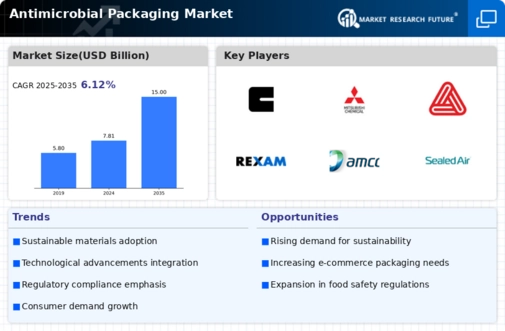
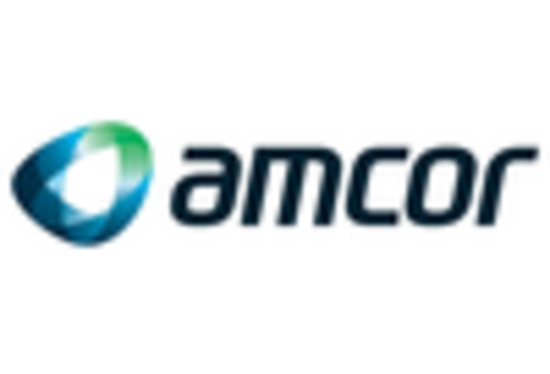

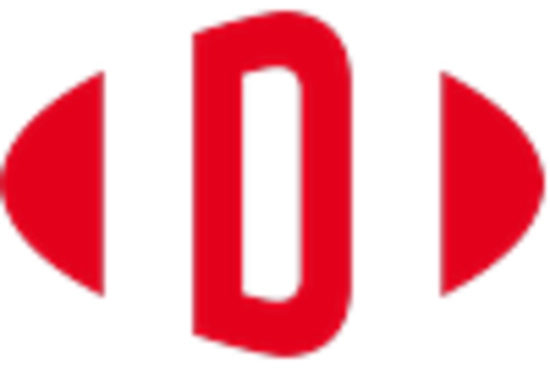
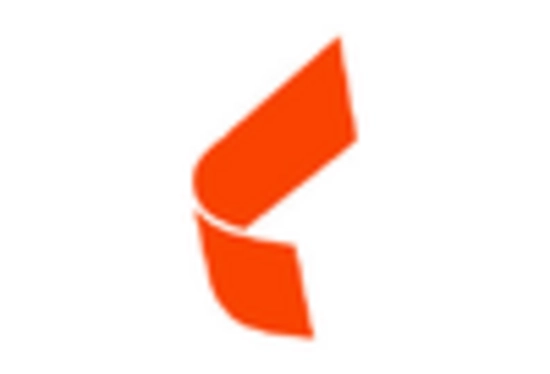
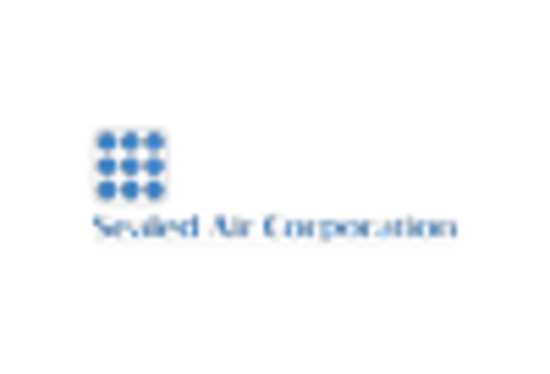
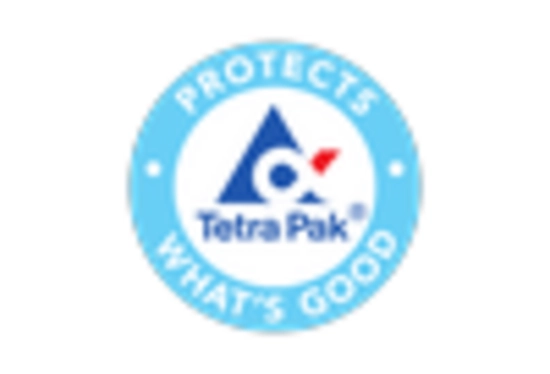

Leave a Comment